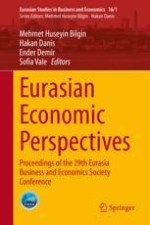2021 | OriginalPaper | Buchkapitel
Measuring the Importance of Churn Predictors in Romanian Telecommunication Industry
verfasst von : Andreea Dumitrache, Stelian Stancu, Madalina Stefanet
Erschienen in: Eurasian Economic Perspectives
Aktivieren Sie unsere intelligente Suche, um passende Fachinhalte oder Patente zu finden.
Wählen Sie Textabschnitte aus um mit Künstlicher Intelligenz passenden Patente zu finden. powered by
Markieren Sie Textabschnitte, um KI-gestützt weitere passende Inhalte zu finden. powered by
